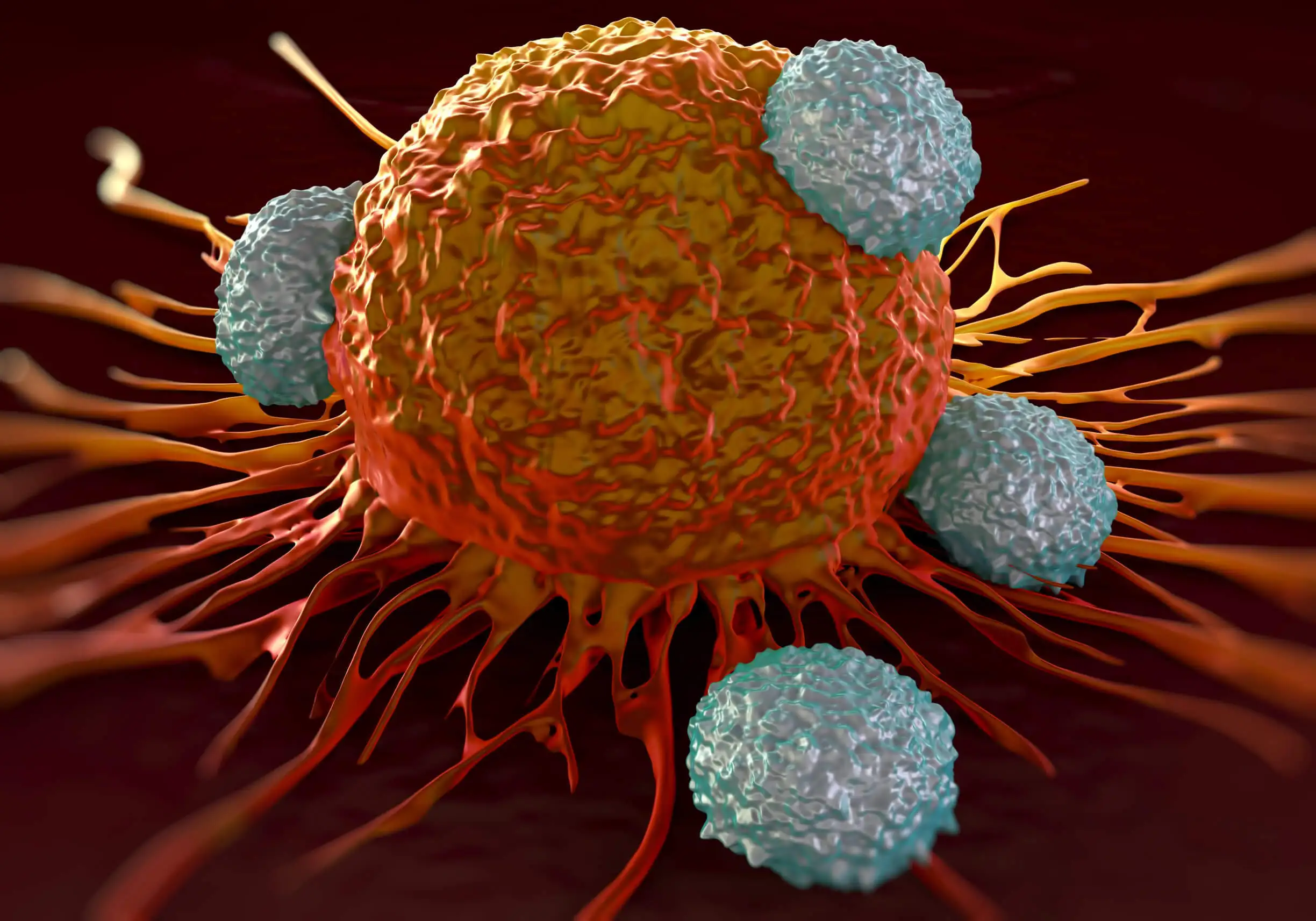Oncological Blood Tests: What Are They and When Are They Done?


Written and verified by the doctor Maryel Alvarado Nieto
One of the leading causes of death in the world is cancer. For this reason, attempts are being made to develop ways of detecting it in its early stages. Among these ways are oncological blood tests, also called tumor markers.
Although some genes involved in the development of various types of neoplasms are already known, they’re usually considered to have a multifactorial origin. Therefore, current research is aimed at establishing the risk factors involved in the transformation of a normal cell into a tumor cell.
Due to this change in function, neoplastic cells can produce substances that are different from those observed in a normal cell or produce large quantities of a compound that’s considered physiological. These molecules can be detected in an oncological blood test.
What is a tumor marker?
The term serum tumor marker refers to a substance that can be recognized in the laboratory through an oncological blood test. The name implies that these compounds are produced by tumor cells, but the term also includes substances derived from normal cells in the presence of cancer.
There are benign situations in which tumor markers are elevated without neoplasia.
The detection of these substances by routine blood testing has great advantages:
- Only a single blood sample is needed, so it’s considered a non-invasive test.
- Oncological blood tests are inexpensive compared to other screening methods.
- The results are available in a short time, which can speed up the process of investigating a neoplasm.
The effectiveness of oncologic blood tests
Any diagnostic test is repeatedly evaluated for effectiveness. In general, tests are evaluated using the following terms:
- Sensitivity: The ability of a test to detect diseased persons. When sensitivity is high, a normal result almost always rules out the diagnosis.
- Specificity: This evaluates the proportion of healthy individuals whose test is negative. When the specificity of a study is high, a positive result is able to confirm the disease.
The specificity and sensitivity of oncologic blood tests vary according to the tumor marker and even according to the type of neoplasm. Some limitations to consider are the following:
- Not all tumor markers are specific for a tumor type.
- In some cancer patients, the values are within normal limits.
- There are benign situations in which the markers may be elevated, without representing a pathological course.

The usefulness of oncologic blood tests
Due to the limitations seen in tumor markers, the ordering of these tests and subsequent interpretation of the results should be performed by trained personnel. Similarly, it’s necessary to adapt the reading to each patient.
However, professionals bear in mind these three tips:
- Take into account the serum concentration. The higher a result is found, the greater the probability that a neoplasm is present.
- Rule out any pathology considered benign that could be implicated in an altered result.
- Perform several serial detections instead of a single isolated value.
There’s currently no tumor marker that serves as a single guideline for the diagnosis of a neoplasm. Even so, its detection serves as an initial study when cancer is suspected in a given patient.
After treatment is started, one of the ways to evaluate the effectiveness of the therapy is through the detection of tumor markers and their comparison with previous values. Similarly, the determination of these substances in periodic oncological blood tests serves to search for any recurrence of cancer.
What are the main tumor markers in oncological blood tests?
In clinical practice, the request for tumor markers depends on the diagnostic suspicion of a particular neoplasm. And although there’s a wide range of substances detectable in the blood, we’ll explain the most commonly used ones below.
Carcinoembryonic antigen (CEA)
This is a glycoprotein of fetal origin that’s elevated in colorectal cancer and is therefore often requested as a treatment monitor. However, it may also show increased values in melanoma, lymphoma, breast, lung, pancreatic, stomach, liver, kidney, bladder, thyroid, cervical, and ovarian cancers.
There are conditions in which this oncologic blood test is altered in the absence of cancer. Among these entities are the following:
- Inflammatory bowel disease
- Pancreatitis
- Hepatopathies
- Smokers
We think you may also enjoy reading this article: Is it Normal to Have Blood Clots During Your Period?
Alpha-fetoprotein (AFP)
This is a protein synthesized in fetal life, so its values decrease rapidly after birth. It’s an oncological blood test useful in detecting germinal tumors (testicular and ovarian) and in cases of hepatocarcinoma.
On the other hand, since it’s a protein synthesized by a fetus, values may be increased in pregnant women. Similarly, there are non-tumorous liver pathologies in which increased values of alpha-fetoprotein are observed.
The same occurs in cases of liver metastases.
Human chorionic gonadotropin (hCG)
This is a glycoprotein made up of two subunits: alpha and beta. The former is similar in structure to the alpha subunits of several hormones, so detection of the beta-hCG fraction is often also requested.
This is an oncological blood test useful in germ cell tumors, such as choriocarcinoma, but also in gestational trophoblastic disease and ectopic pregnancies.
Like this article? You may also like to read: Policosanol: Is it Effective in Regulating Cholesterol and Blood Pressure?
Prostate-specific antigen (PSA)
PSA is an enzyme involved in male fertility, as it plays an important role in seminal fluid. It’s produced by epithelial cells located in the prostate. This includes both normal cells and those showing varying degrees of hyperplasia and even cancer.
Because of this variability, its value may be elevated in the absence of a neoplasm. Likewise, a result within normal limits is not sufficient to rule out a tumor lesion. However, it’s a very useful marker in the early detection of prostate cancer, especially when used in conjunction with digital rectal examination.
This is an essential exam for the periodic follow-up of patients in remission.
CA 125
This is an antigen used in the detection of ovarian tumors. However, it’s also elevated in other neoplasms (pancreas, stomach, bladder, colon, lung and breast). On the other hand, there are certain conditions in which CA 125 may have increased values:
- Pelvic inflammatory disease
- Ovarian cysts
- Endometriosis
- Pregnancy
- Hepatopathies
- Pancreatitis

CA 19-9
This antigen is elevated in neoplasms of the pancreas and bile ducts. However, CA 19-9 may be increased in other types of cancer and other non-neoplastic processes.
More substances useful as tumor markers
- CA 50
- CA 27.29
- Alkaline phosphatase
- Beta-2-microglobulin (B2M)
- Lactate dehydrogenase (LDH)
- Neuron-specific enolase (NSE)
- Oncoprotein C-erb B2 or Her-2-neu
- Squamous cell carcinoma antigen (SCC)
Situations in which doctors request tumor markers
Although oncologic blood tests are an arsenal created for the early detection of different types of cancer, they have not shown usefulness in screening the population without risk factors or diagnostic suspicion. Therefore, they’re considered impractical to apply as screening protocols for everyone.
However, are very useful in the diagnosis of cancer in patients in whom a tumor is already suspected. Likewise, the greatest benefit demonstrated by most of them lies in the follow-up of patients.
This is primarily because they make it possible to evaluate the effectiveness of the treatments administered. In addition, their periodic application allows for the early detection of recurring cases of cancer.
All cited sources were thoroughly reviewed by our team to ensure their quality, reliability, currency, and validity. The bibliography of this article was considered reliable and of academic or scientific accuracy.
- Contreras, N.; Lugo, G.; Martínez, J.; Introducción a los Marcadores Tumorales Séricos; Médica Sur; 116 (3): 111 – 121; 2006.
- Ramírez, H.; Rodríguez, J.; Palacio, H.; Ardila, E.; López, A.; Fuentes, E.; Marcadores Tumorales; Acta Médica Colombiana; 15 (3); 1990.
- Maldonado Mercado, M. G., Pereyra Morales, M. A., & Zenteno Galindo, E. A. (2015). Estructura y función de la alfa-fetoproteína. Revista de la Facultad de Medicina (México), 58(4), 5-13.
- Hermida, I.; Sánchez, E.; Nerín, C.; Cordero, R.; Mora, I.; Pinar, J.; Marcadores Tumorales; Revista Clínica de Medicina de Familia; 9 (1): 31 – 42; 2016.
- Bravo, S.; Cruz, J.; Estudios de Exactitud Diagnóstica: Herramientas para su Interpretación; Revista Chilena de Radiología; 21 (4): 158 – 164; 2015.
- Ruiz, A. C., Jiménez, F. R., Hernández, J. A. L., & Jiménez, F. J. G. (2014). Capacidad diagnóstica del antígeno carcinoembrionario. Gastroenterología y Hepatología, 37(10), 551-557.
- Vizcaíno, G.; Importancia del Cálculo de la Sensibilidad, la Especificidad y otros Parámetros Estadísticos en el Uso de las Pruebas de Diagnóstico Clínico y de Laboratorio; Medicina & Laboratorio; 23: 265 – 286; 2017.
This text is provided for informational purposes only and does not replace consultation with a professional. If in doubt, consult your specialist.








